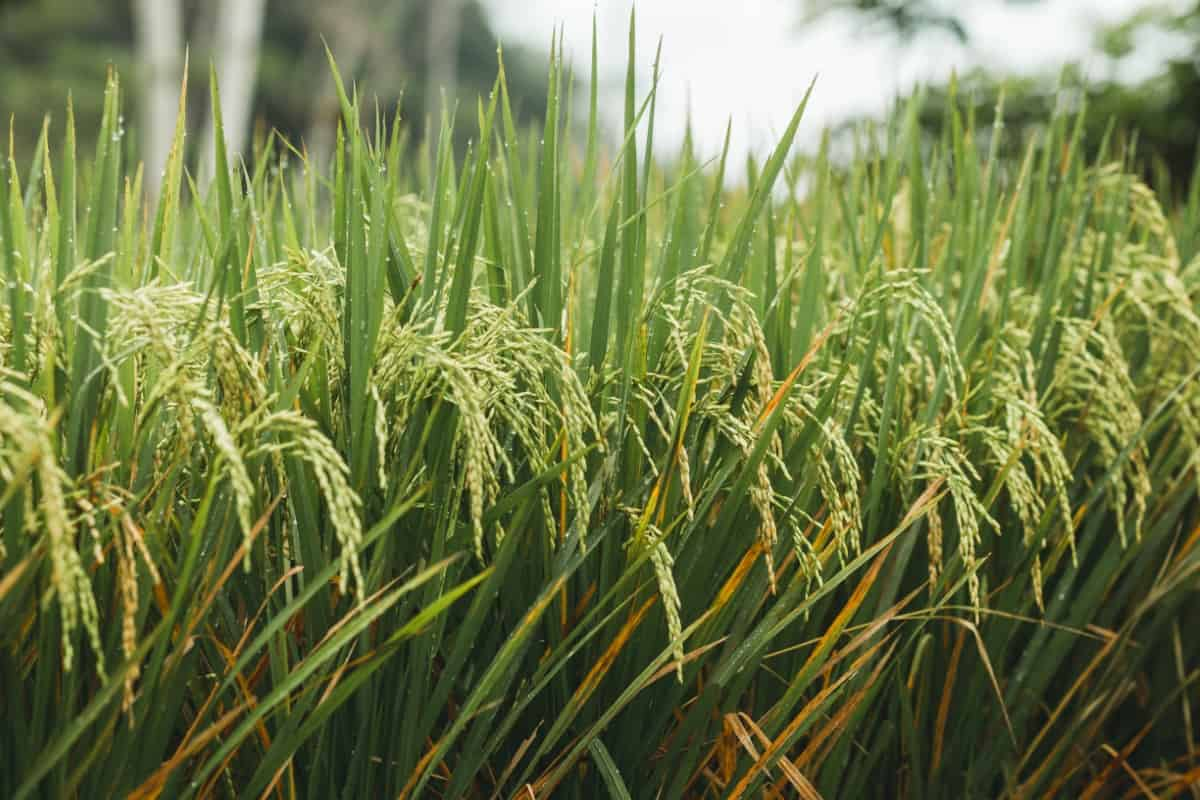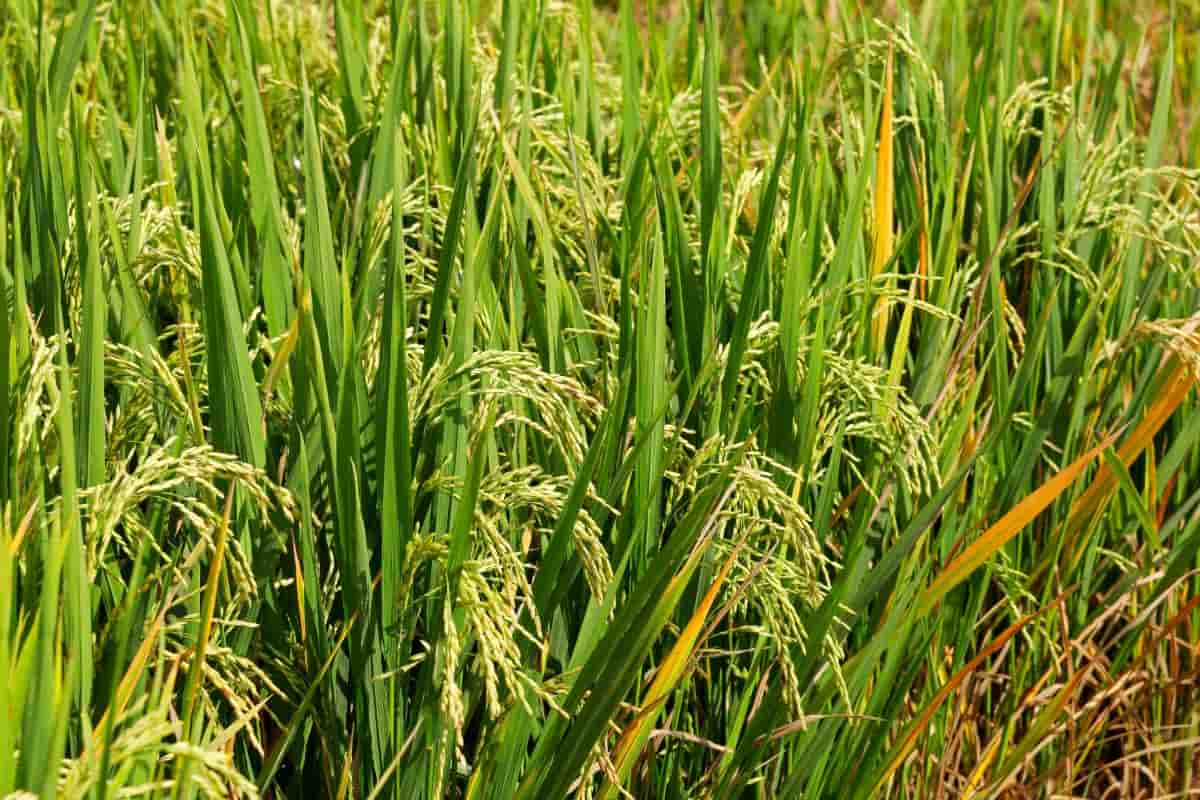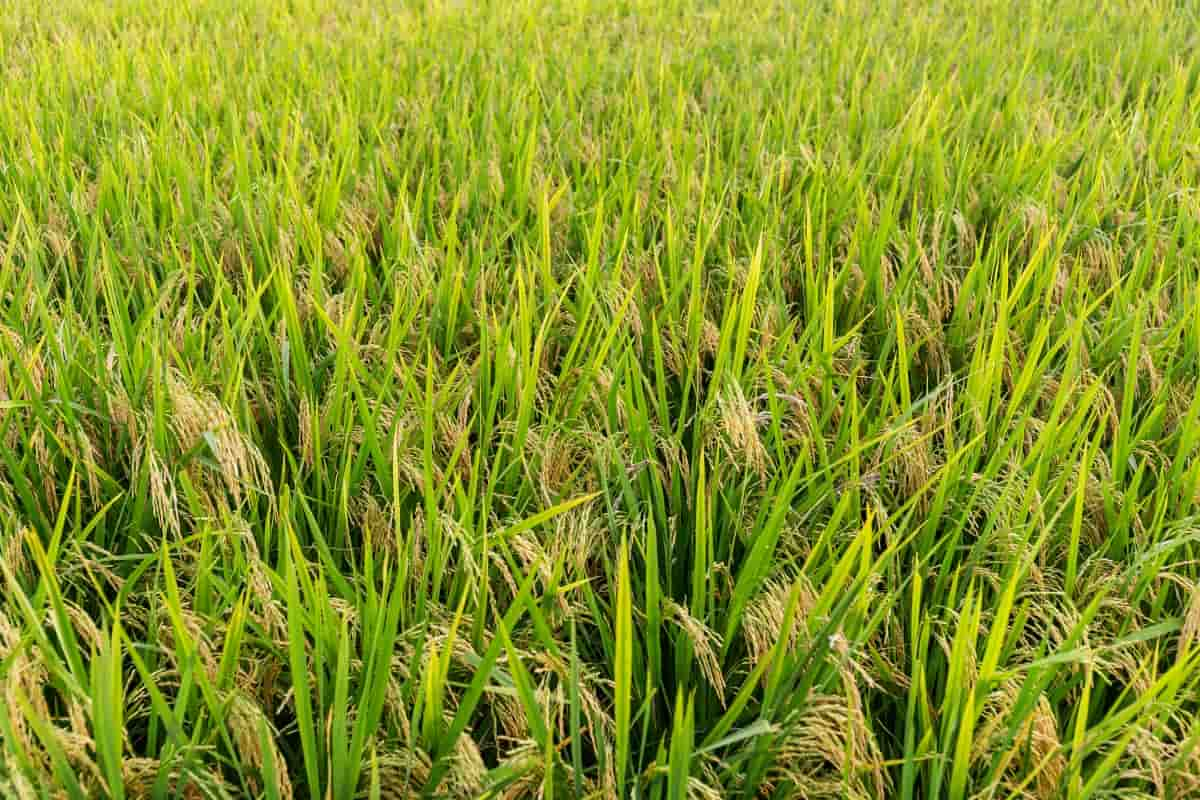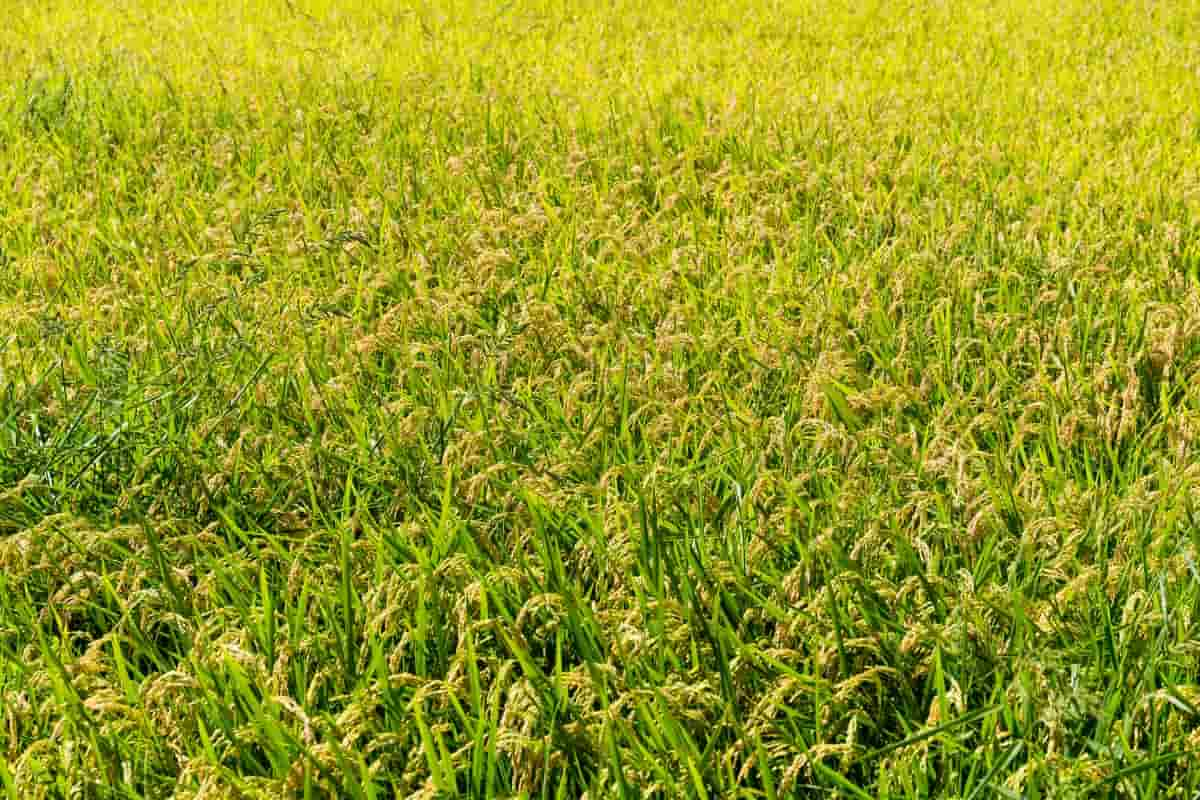Optimize rice production by delving into the control, management, and treatment of Bacterial Leaf Blight. Explore the nuances of Xanthomonas oryzae, understanding its impact on rice and identifying disease symptoms. Implement effective strategies for managing rice blight, considering climate influences and employing chemical and biological controls.

Discover resilient rice varieties resistant to blight and stay ahead with cutting-edge detection technology. This comprehensive guide with the essential knowledge to combat Bacterial Leaf Blight, ensuring a robust defense against this detrimental rice disease.
Bacterial Leaf Blight in Rice
Introduction to Bacterial Leaf Blight in Rice
Bacterial leaf blight (BLB) is a serious disease of rice by the bacterium Xanthomonas oryzae pv. oryzae (Xoo). It affects rice plants at all stages of growth, causing wilting, yellowing, drying, and blighting of leaves. BLB can reduce yield and grain quality significantly, especially when it occurs early in the season or at the booting stage. BLB is prevalent in rice-growing regions of Asia, Africa, Latin America, the Caribbean, and occasionally in the United States.
The wind, rain, irrigation water, insects, infected seeds, and plant debris transmit BLB. The bacterium enters the plant through natural openings such as stomata or hydathodes. It multiplies rapidly in the xylem vessels, blocking the water flow and causing wilting. It also produces toxins that damage the plant cells and tissues. The symptoms of BLB vary depending on the plant’s age, variety, environmental conditions, and pathogen strain.
Significance in Global Rice Production
BLB is one of the most destructive diseases of rice worldwide. Cause yield losses to 70% in varieties under favorable conditions. It also affects the grain quality by reducing the milling recovery, head rice percentage, and cooking quality. BLB can also increase the susceptibility of rice plants to other diseases and pests. BLB poses a major threat to food security and the livelihoods of millions of rice farmers and consumers.
Causative Agent: Xanthomonas oryzae pv. oryzae
Xoo is a gram-negative, rod-shaped, aerobic bacterium with a single polar flagellum. It belongs to the genus Xanthomonas, which comprises many plant pathogenic bacteria. Xoo is specific to rice and does not infect other crops or weeds. Xoo has a wide genetic diversity and can be classified into different races based on its ability to infect different rice varieties. Xoo can also mutate rapidly and overcome the resistance genes in rice.
Characteristics of the Bacterial Pathogen
Xoo can survive in soil, water, plant debris, and seeds for several months. It can also be carried by insects such as leafhoppers and planthoppers that feed on rice plants. Xoo is favored by high temperature (25-34°C), high humidity (>70%), heavy rainfall, strong wind and flooding. Xoo can infect rice plants at any stage of growth, but young plants are more susceptible than older ones. Xoo can also infect different parts of the plant, such as leaves, sheaths, stems, panicles, and grains.
Life Cycle and Epidemiology
Xoo overwinters in infected plant debris or seeds. It is dispersed by wind, rain, irrigation water, or insects to healthy plants. Enter the Plant through wounds or natural openings and colonize the xylem vessels. It produces symptoms such as water-soaked lesions that enlarge and turn yellow to white with wavy margins. The lesions may coalesce and cover the entire leaf blade or tip. The infected leaves dry up and die. The bacterium also oozes out from the lesions as milky droplets that dry up as yellow beads on the leaf surface. These beads serve as sources of inoculum for secondary infection.
In case you missed it: How to Manage Insect Pests in Rice/Paddy: Damage Symptoms, Prevention and Control

Symptoms and Disease Progression
Early Stage Symptoms
The first symptoms of BLB appear as water-soaked lesions on leaf blades or tips near the margins. The lesions are translucent and have a wavy margin. They may be circular or elongated depending on the direction of infection. The lesions enlarge rapidly both in length and width and turn yellow to orange within a few days.
Advanced Disease Manifestations
As the disease progresses, the lesions turn grayish-white with black dots due to the growth of saprophytic fungi. The lesions may extend to the leaf sheath and cause wilting of the entire leaf or plant. This is called the kretek or wilting phase, which occurs mostly in seedlings or young plants. In older plants, BLB may affect the panicles and cause sterility or discoloration of grains.
Environmental Factors Influencing Disease Severity
The severity of BLB depends on several environmental factors, such as temperature, humidity, rainfall, wind, irrigation, and nitrogen fertilization. High temperature (25-34°C), high humidity (>70%), heavy rainfall, strong wind, and flooding favor the development and spread of BLB. Excessive nitrogen fertilization also increases the susceptibility of rice plants to BLB by enhancing the growth of the bacterium and the toxin production.
Disease Management Strategies: IDM Approaches, Cultural Practices
The most effective and economical way to manage BLB is to use resistant varieties. Several rice varieties with different levels of resistance to BLB have been developed and released by various research institutes. However, the resistance may break down due to the emergence of new races of Xoo. Therefore, it is important to monitor the disease situation and use appropriate varieties for different regions and seasons.
Cultural practices such as crop rotation, fallow fields, weed control, balanced fertilization, proper water management, and removal of infected plants can also reduce the incidence and severity of BLB. These practices can help to avoid favorable conditions for the disease, reduce the inoculum sources, and improve plant health.
Chemical Control Options: Appropriate Bactericides and Application
Chemical control of BLB could be more effective and economical due to the difficulty of reaching the bacterium inside the plant tissues and the risk of environmental pollution. However, some bactericides, such as copper compounds, antibiotics, and plant extracts, can be used as preventive or curative measures in case of severe outbreaks or in combination with other methods.
The bactericides should be applied as soon as the symptoms appear or before the onset of favorable conditions. The application should be made with proper equipment, dosage, timing, and frequency.
Biological Control Methods
Biological control of BLB involves the use of natural enemies such as antagonistic bacteria, fungi, or viruses that can inhibit or kill Xoo. Some examples are Bacillus spp., Pseudomonas spp., Streptomyces spp., Trichoderma spp., and phages. These agents are applied as seed treatments, soil amendments, or foliar sprays. They can also be used in combination with resistant varieties or cultural practices to enhance their efficacy.
In case you missed it: Rice Tungro Disease Management in Paddy: Symptoms, Treatment, Chemical, Biological, Natural, and Organic Control

Breeding for Disease Resistance
Breeding disease resistance is the most sustainable, cost-effective way to control BLB. Several resistance genes have been identified and mapped in rice and related species. These genes can confer different types of resistance, such as race-specific, broad-spectrum, quantitative, or durable resistance. They can also be combined or pyramided to achieve higher levels of resistance. Molecular markers are used to facilitate the selection and introgression of resistance genes in rice breeding programs.
Technological Advances in Disease Detection
Technological advances in disease detection can help to diagnose BLB accurately and rapidly, monitor the pathogen diversity and distribution, and evaluate the resistance status of rice varieties. Some of the techniques include microscopy, serology, PCR, LAMP, ELISA, biosensors, and remote sensing. These techniques can provide reliable, sensitive, and specific results that can aid in decision-making and disease management.
In case you missed it: Rice Blast Disease Management in Paddy: Symptoms, Treatment, Chemical, Biological, Natural, and Organic Control

Conclusion
Safeguarding rice crops from Bacterial Leaf Blight demands a multifaceted approach. By integrating effective control management strategies, considering climate impact, and utilizing advanced treatment methods, growers can fortify their defenses. Embracing resistant rice varieties and cutting-edge detection technology ensures a resilient defense against this detrimental agricultural threat.
- Types of Fungicides Used in Agriculture
- Common Issues in the Fruit Development Stage of Pomegranate Farming
- Fruit Development Issues in Papaya: Easy Solutions and Treatment
- Soil-Borne Diseases and How to Protect Your Plants
- Practices to Prevent Disease Spread in the Garden
- From Wilted to Thriving: How to Treat Root Rot Naturally in Houseplants
- Natural Remedies to Cure Brown Spots on Fig Tree Leaves
- Natural Solutions for Poinsettia Problems: 100% Effective Remedies
- How to Control Calla Lily Problems: Natural Remedies for Leaf and Flower Problems